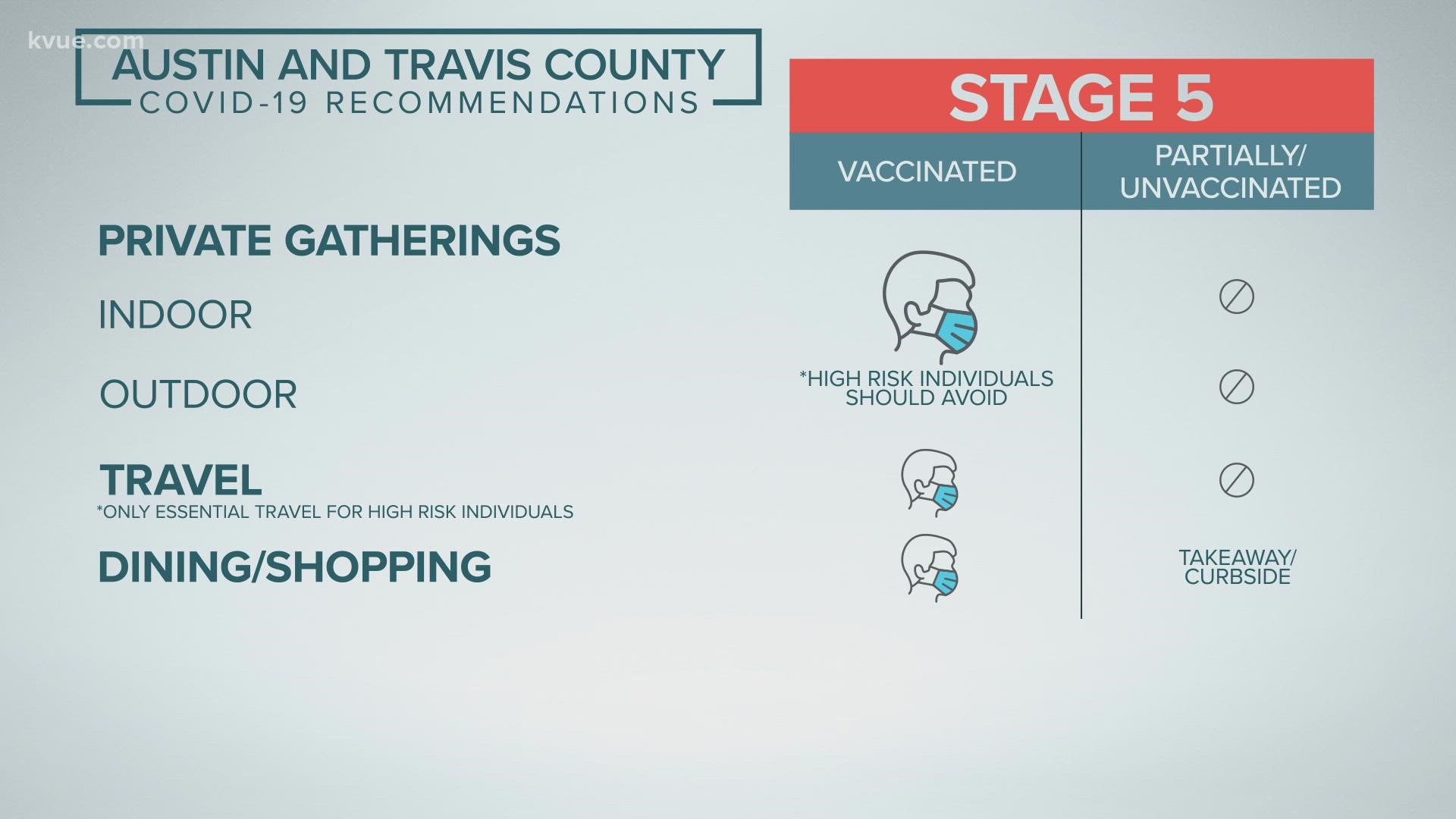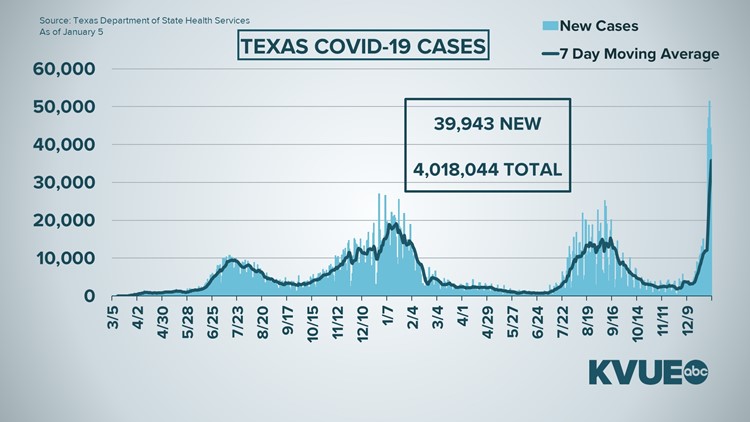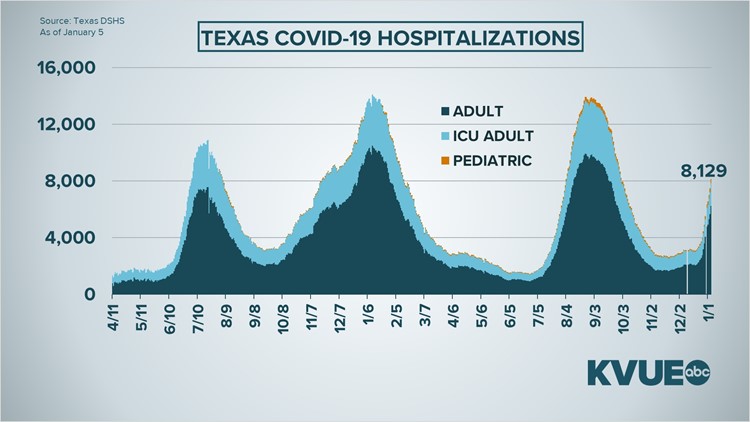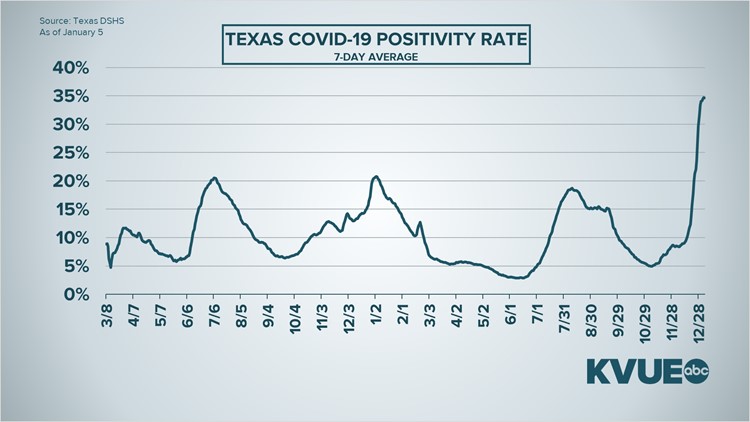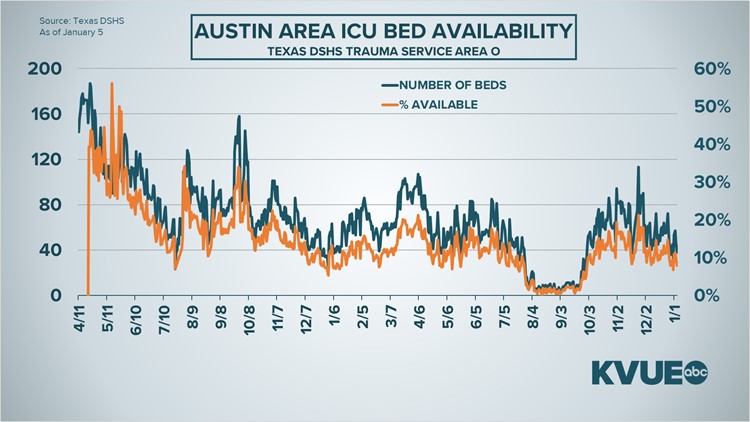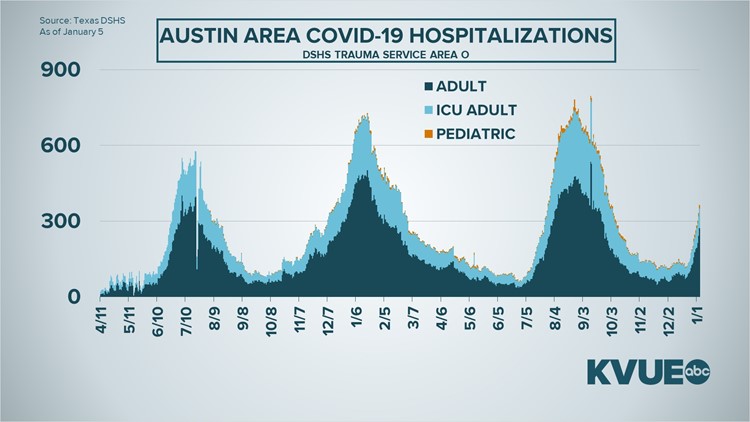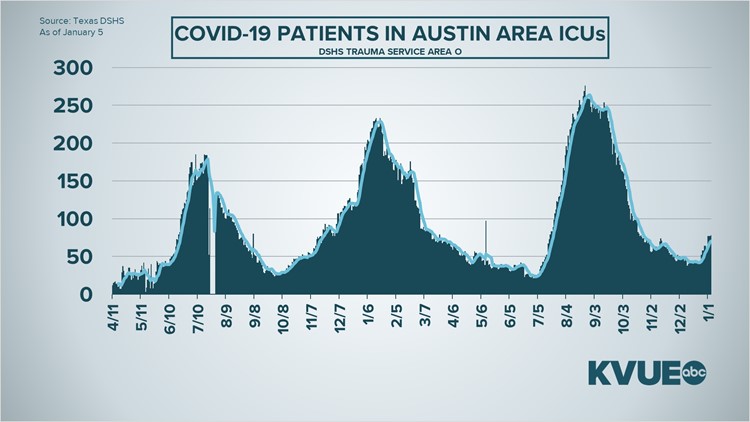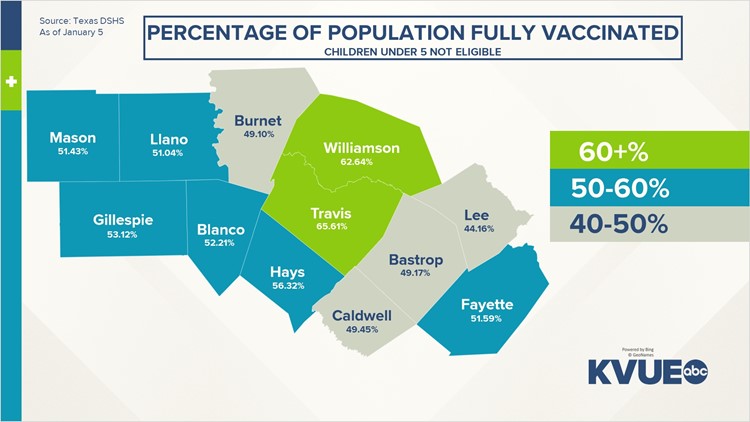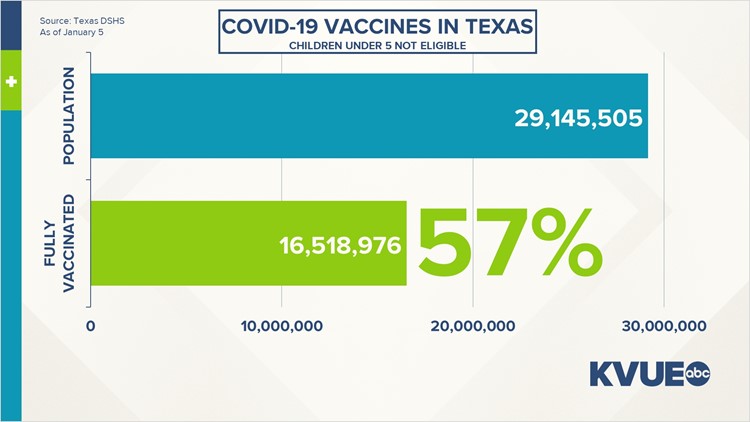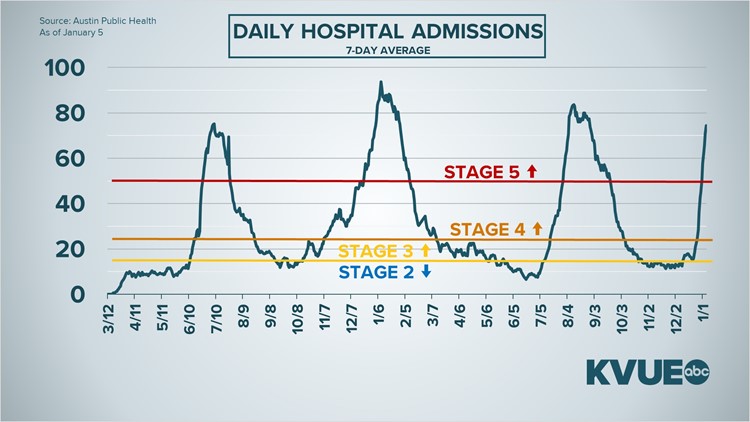AUSTIN, Texas — Austin-Travis County leaders announced on Jan. 6 that the area has moved from Stage 4 to Stage 5 of its COVID-19 risk-based guidelines.
On the City's dashboard, officials track the seven-day moving average of new hospital admissions, community transmission rate and positivity rate when determining COVID-19 risk-based guidelines staging. As of Jan. 4, all three indicators were in Stage 5 territory.
“Workforces are short-staffed and hospitals have been stressed by staff absences and staffing shortages as a result due to omicron. There will come a point when schools and businesses and community centers won’t be able to open their doors if we don't do something," Dr. Desmar Walkes with Austin Public Health said.
"What does this mean for us? The places where we go for care will be short-staffed, the places where we go to eat will be short-staffed and the places where we go to buy goods and services will be short-staffed," Walkes aded. "If we don't do something, our way of life is in danger."
However, there are efforts in place to help address the staffing shortage in hospitals.
"We have requested and received a contract staff from the state, for which we're extremely grateful," said Walkes. "That's going to help to some extent, but we are having large numbers of staff who are out sick, and so that continued spread of COVID is continuing to impact us."
The City moved from Stage 3 to Stage 4 of its COVID-19 risk-based guidelines on Dec. 29. At the time, only two of the three key indicators – community transmission rate and positivity rate – were in Stage 5, with 405 and 15.7% respectively. Since then, those two metrics have grown to 1,066.8 and 29.7% as of Jan. 5.
The seven-day moving average of new hospital admissions crossed the Stage 4 threshold on Dec. 28 at 36, up from 16 just days before Christmas. Now, the seven-day moving average of new hospital admissions has well surpassed the Stage 5 threshold (50+). As of Jan. 5, the seven-day moving average of new hospital admissions was 74. An estimated 385 people were hospitalized with COVID-19 as of Jan. 5.
In the Jan. 6 briefing, Walkes also acknowledged that at-home tests aren't included in the positivity rate as it's reflected on the City's dashboard.
"We know that there are many people in the community who are doing at-home tests, so the numbers that we're seeing are an underrepresentation of what the disease burden is in our community," Walkes said. "We estimate that there may be 3 to 4% of those in our community who are sick at this point. So, to break that down for practical purposes, if you're in a group of 25 people, say, you can safely assume that there is at least one person in that group who's been affected by omicron and is sick."
When asked how long health leaders expect us to be in this stage 5, Mayor Steve Adler said:
"It's up to the community in terms of whether people will step forward and more people wear masks in places. It's up to us at this point."
In the briefing from Austin health officials on Tuesday, Jan. 4, Walkes said the omicron variant is driving the current surge in Central Texas. She said the Austin area saw a 135% increase in daily hospital admissions for people who are COVID-19 positive over the past week.
Walkes said that before omicron, 60-70% of hospitalizations were unvaccinated people, which has since dropped to 50%, meaning more vaccinated individuals are now in the hospital during the surge. Walkes noted that some people were hospitalized for other health problems and subsequently tested positive for coronavirus.
According to Walkes, vaccinations still seem to be preventing severe illness. She said local health officials are noting that people with underlying issues can still get very sick with omicron and encouraged getting a coronavirus booster shot.
What is the difference between Stage 4 and Stage 5?
Here is a look at the latest differences for the risk-based guidelines between stages for vaccinated and unvaccinated individuals:

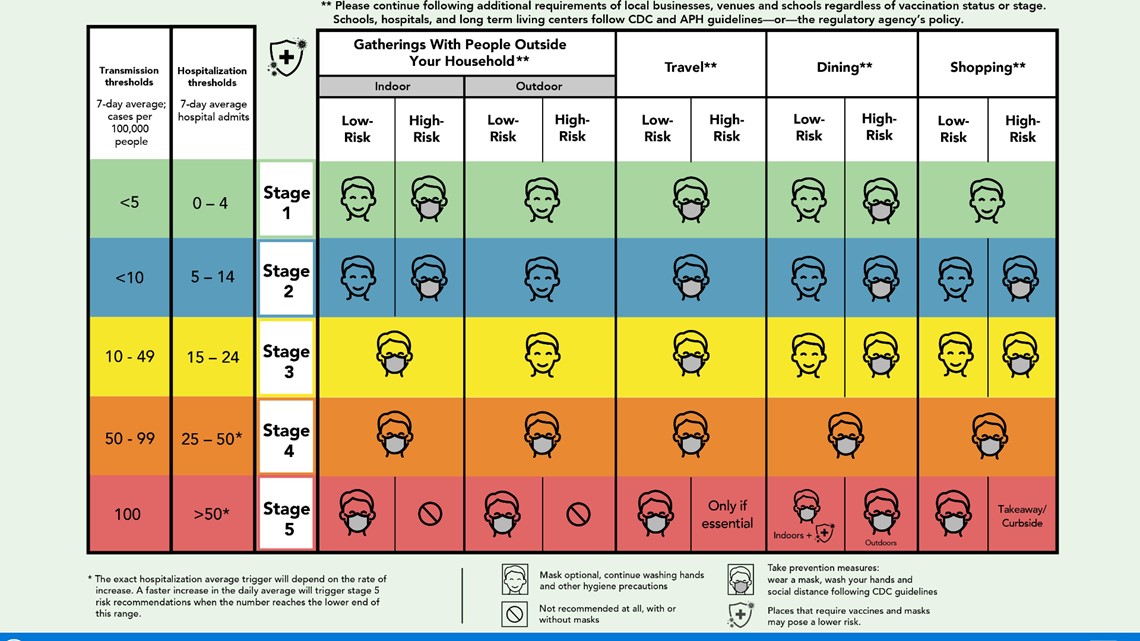
In Stage 5, APH officials advise high-risk individuals to not gather with people outside their households. For low-risk individuals, you're advised to wear a mask when doing so. These recommendations are the same regardless of whether you're indoors or outdoors.
Another difference between Stage 4 and Stage 5 is, under Stage 5, high-risk individuals are advised to only travel for essential services or purposes, whereas in Stage 4 it would be OK to travel while masking.
High-risk individuals are also recommended to use takeout and/or curbside shopping under Stage 5.
APH is recommending that businesses require or recommend masks for customers and require their employees to mask and that customers choose curbside and take-out options when they can to decrease interaction in indoor spaces. Businesses are also asked to do what they can to maintain social distancing.
GRAPHS: COVID-19 data Jan. 5, 2022
PEOPLE ARE ALSO READING:

